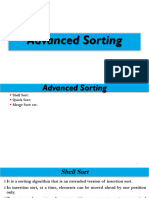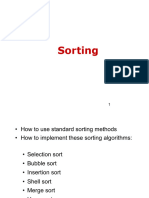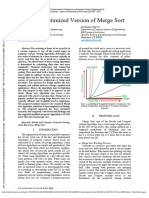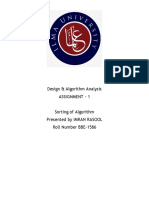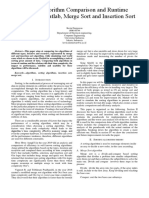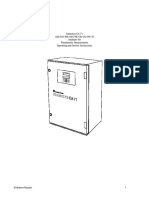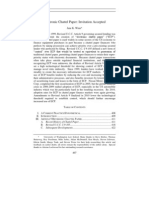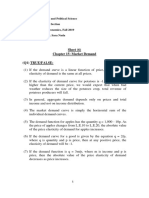0% found this document useful (0 votes)
13 views29 pagesSorting Preliminary
The document provides an overview of various sorting algorithms including Insertion Sort, Shell Sort, Heap Sort, Merge Sort, and Quick Sort, detailing their methodologies, time and space complexities, advantages, and disadvantages. It explains how each algorithm operates, with specific steps and examples for clarity. Additionally, it discusses the scenarios in which each sorting method is most effective, highlighting their applications and performance considerations.
Uploaded by
iyonahpolokoCopyright
© © All Rights Reserved
We take content rights seriously. If you suspect this is your content, claim it here.
Available Formats
Download as PDF, TXT or read online on Scribd
0% found this document useful (0 votes)
13 views29 pagesSorting Preliminary
The document provides an overview of various sorting algorithms including Insertion Sort, Shell Sort, Heap Sort, Merge Sort, and Quick Sort, detailing their methodologies, time and space complexities, advantages, and disadvantages. It explains how each algorithm operates, with specific steps and examples for clarity. Additionally, it discusses the scenarios in which each sorting method is most effective, highlighting their applications and performance considerations.
Uploaded by
iyonahpolokoCopyright
© © All Rights Reserved
We take content rights seriously. If you suspect this is your content, claim it here.
Available Formats
Download as PDF, TXT or read online on Scribd
/ 29

















